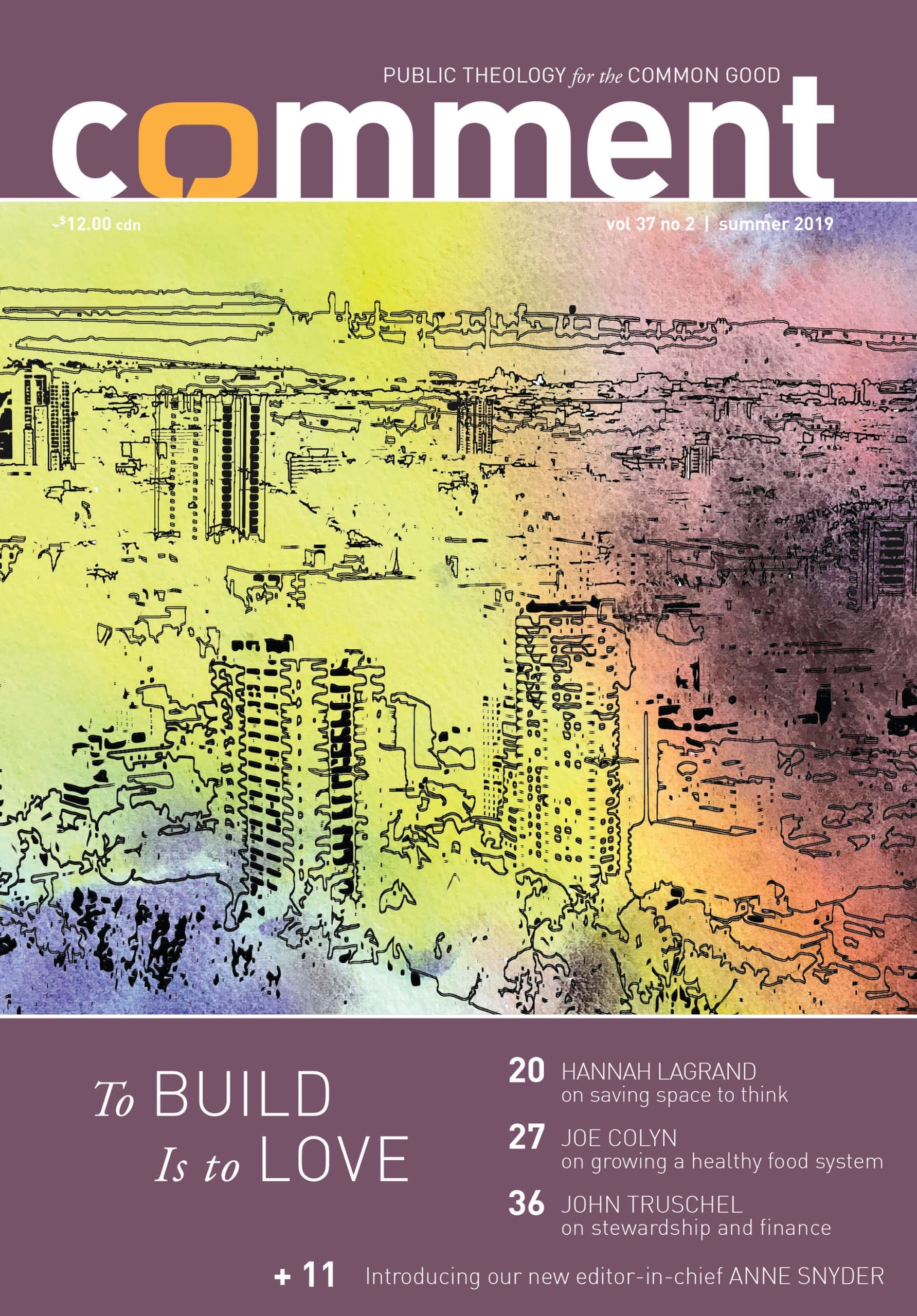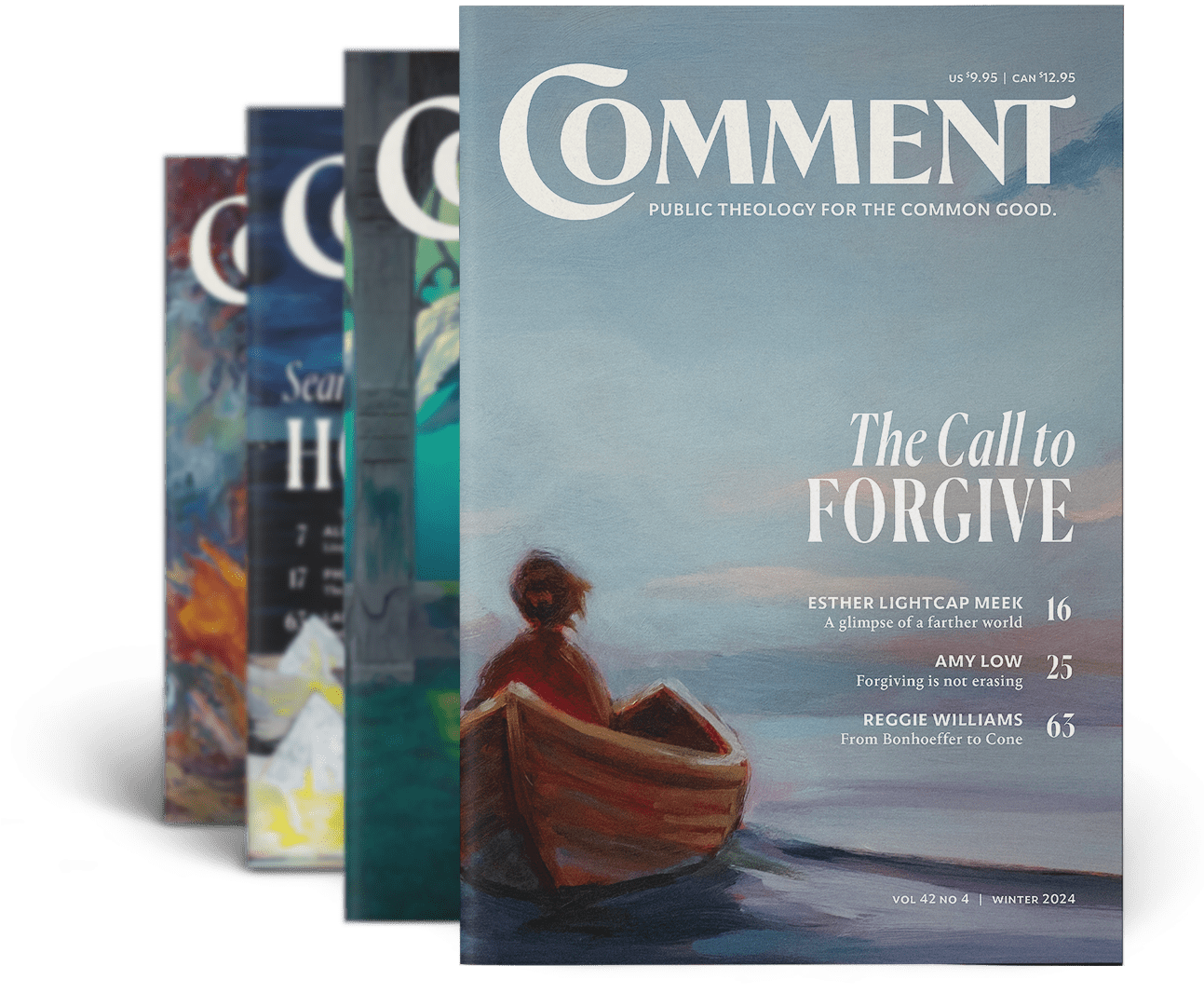I’ve been reading about Bach lately. More specifically, I’ve been reading Paul Elie’s wonderful biography of the German composer. Elie tells Bach’s story through those who interpreted him—Pablo Casals, Albert Schweitzer, Rosalyn Tureck, Glenn Gould, Masaaki Suzuki among others. These stories, it turns out, are really about how these artists introduced Bach anew to their particular time and place. In each case Elie shows us how the artists interacted with the troubles and technologies of the day to “reinvent” Bach’s music for their times. Running through my head throughout the reading of this book was Bach’s insistence on offering his daily work, his reading, his marriage, his children, to the great love of his life: God.
Pablo Casals’s description of his approach to Bach’s music is a beautiful distillation of what he, Bach, and Elie are all after, and it has deep resonances with the mission of Comment and the institution that publishes it: “Every spring the leaves of the trees re-appear with the spring, but they are different every time. . . . How can we expect to produce a vital performance if we don’t re-create the work every time?”
What is striking about Casals’s outlook is that he maintained it in such desperate times. His home city of Barcelona was burning after being bombed by Franco, and Casals’s very life was in danger. (Elie tells of the Gestapo visiting Casals to “request” a recital, a story that made me break out into a cold sweat.) Yet Casals’s posture was formed by his desire to create new life. His world was burning around him, but he looked to fresh leaves and new shoots as his basic orientation for life. Note too that he had no pretense of revolutionary creation ex nihilo. Instead, he committed his life to re-creating something that someone else had created, which was itself created out of deep, life-forming love—Bach’s life crafted in response to the love of God. Glenn Gould, the talented, eccentric Canadian performer of Bach, understood “all art [as] variation,” and it caused him to pour his heart and soul into ever new recordings of the same notes that have been played millions of times around the world. Indeed, listening to hundreds of Bach’s interpreters play one of his most famous pieces—the Goldberg Variations—one can’t help but hear echoes of Lewis and Tolkien’s meditations on how creation is never, really, original. Each act of creation is individual and new, and simultaneously mimics some other creation, which in turn is mimicking something else. At the end of that chain is an original act of creation motivated by pure love.
As I continue to read Elie’s biography of Bach, these familiar words of Lamentations ring in my head. The author, after a litany of horrors, says this astonishing thing:
But this I call to mind,
and therefore I have hope:
The steadfast love of the Lord never ceases;
his mercies never come to an end;
they are new every morning. (Lamentations 3:21–23)
We’re too mechanically inclined these days to think of the rising of the sun as an act of creation, let alone as an act of love. But Lamentations tells us it is. Calvin, recalling Christ’s words in Matthew 5:45 (“[The Father] makes his sun rise on the evil and on the good”), puts it in even gentler terms. The sun, he says, “does not daily rise and set by blind instinct of nature—but God Himself, to renew our remembrance of His fatherly favors toward us, governs its course.”
I think it’s notable that Christ’s words come in the middle of a text where we are told to love our enemies. Is this a subtle way of God telling us to mimic his mercy? Could it be that one of the best ways we can love our enemies today is to mimic God not by opposition, but by creation? Might creation be an act of mercy?
Perhaps I’m stretching. But I don’t think so. Rebecca West, someone else acquainted with desperate times, once noted that “nothing is easier than being in opposition.” In a sense, she’s noting that it is easier to hate than to love. Etymologically, hate is opposition—to treat as an enemy. Opposition is easy because it doesn’t require the same level of attention that making something does. In opposition, you needn’t pay attention to anything but flaws. In creation, you have to attend to the thing itself, to a craft, and a tradition; and you can only do that if you also attend to the thing in its place and time.
It strikes me that if we are interested in renewing social architecture—if we wish our lives to be a “vital performance” in the theatre of God’s glory—we would do well to think in such creative, loving terms.
But where to start? Perhaps, like any good architect, the building begins with a sketch. In addition to reading about Bach, I’ve also been learning how to sketch. My son bought me a sketchbook for Christmas, and a friend, seeing I was new to sketching, directed me to Kimon Nicolaïdes’s practice of contour sketching. This process requires the creator to put pen to paper and draw what they see without looking at the paper. Nicolaïdes likens it to “climbing a mountain as contrasted with flying over it with an airplane. . . . It is not a quick glance at the mountain from far away, but a slow, painstaking climb over it, step by step.” And it is painstaking. The process feels as awkward as hell (try it, you’ll see what I mean), but it is a type of training in the attention required for creation.
This issue of Comment features essays that act as a series of contour drawings of our social architecture. Think of it as a sketchbook for the renewal of our social architecture. It is an unfinished project—too many voices and pictures are left out in this small issue—but it’s a start. The goal will be for our authors to “portray exactly what they observe, instead of what they think their subject is supposed to look like.” Of course, as John Berger notes, there are ways of seeing. But that’s the point. Christian social thought is a particular way of seeing. Nicolaïdes describes the point of contour drawings as helping the artist to be “guided more by the sense of touch than by sight”—something that resonates beautifully with a religion that lives by faith, not by sight, but whose God can be touched. This issue will be a collection of sketches from Christians who are creating in a variety of realms and can help our readers do the same. In some cases, the resonances with new, creative life will be clear: Joe Colyn’s call for regenerative architecture, for instance. Others will draw attention to the layers and difficulty of moral and social renewal—Anne Snyder’s contour drawing of philanthropy and character is a case in point. And others—here I’m thinking of Hannah LaGrand’s connection between staring at a wall and a robust public square—will be almost completely intangible, yet as fundamental as a foundation is to a cathedral.
You might say that, given our propensity for the mass production of idols, the correct response is to take up the hammer and smash. There is something to that. We are told to hate that which is evil, and to love that which is good. But if evil is, as Augustine would have it, a privation of goodness, perhaps we can hate evil best by putting our hammers to creative use.





